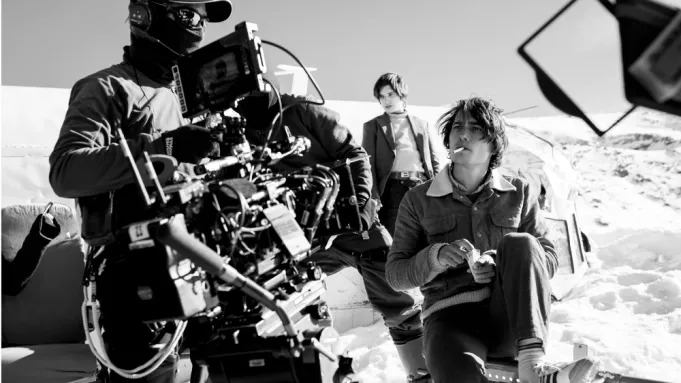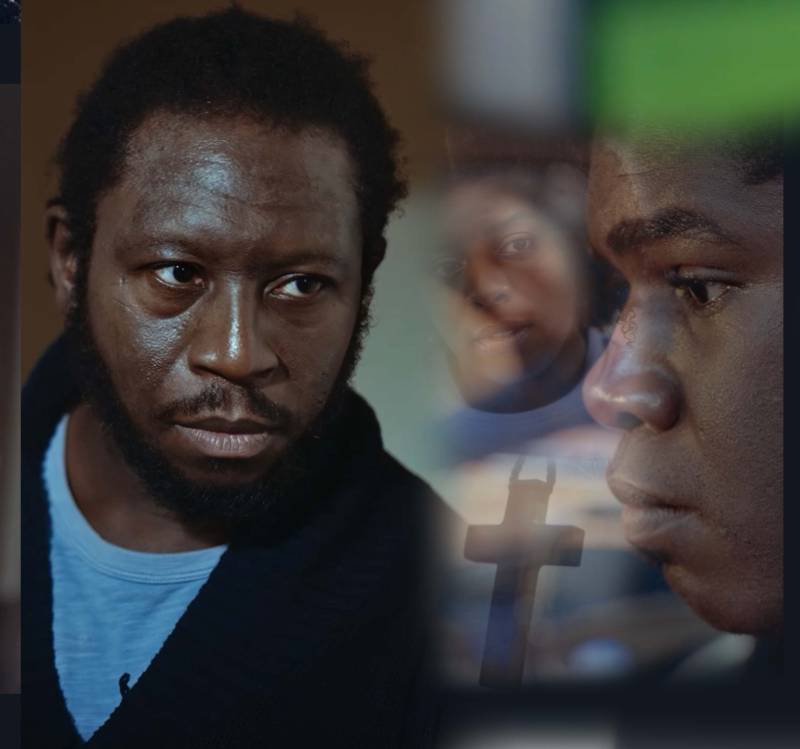Spain’s J.A. Bayona, director of “The Impossible” and “Jurassic World: Fallen Kingdom,” is close to wrapping production on the Spanish leg of Netflix’s “Society of the Snow,” (“La sociedad de la nieve”), one of the Spanish-speaking world’s most ambitious upcoming features for 2023.
Turning on a 1972 air crash in the Andes that forced its survivors to highly extreme measures, the film, marks Bayona’s return to Spanish-language filmmaking for the first time in 16 years since his 2006 feature debut, “The Orphanage.”
What looks set to be a celebration of extraordinary human fortitude in a harrowing intensely physical disaster movie harks back, however, to Bayona’s “The Impossible,” for many still the director’s finest achievement.
“Society of the Snow,” which hosted a set visit for select media a few weeks back, was shot in Andalusia’s Sierra Nevada, mainland Spain’s highest mountain range, using the 15,000-pound fuselage wreckages of three Fairchild Hiller FH-227 passenger aircrafts. These have allowed Bayona to weigh his options on where to film, depending on weather conditions – which were appropriately bitterly inclement during the set visit.
One fuselage is deposited in an enormous hangar, used as a backlot on the slopes of the Sierra: the second one is nearly buried in artificial snow, and surrounded by olive trees; the third is found above the Sierra Nevada’s high mountain tarn La Laguna de las Yeguas, at around 10,000 feet.
Located south of Granada in Southern Spain, the Sierra Nevada typifies one of the biggest factors luring a flood of big international shoots to Spain: Accessible wilderness, facilitated by an advanced tourist industry developed sown the decades. Thanks to a bubble ski lift and caterpillar-tracked ski vehicles, it takes just half an hour to travel from Sierra Nevada’s cosy ski resort to the movie’s highest set.
Broad factual details of the accident are globally renowned. On Oct. 13, 1972, Uruguayan Air Force Flight 571, chartered to bring Montevideo’s Old Christians Rugby Club team to Chile, crashed at an altitude of 11,712 feet in the Andes.
Of the 45 passengers, most consisting of the team and friends and family, 29 survived. Without food, the survivors, part of Uruguay’s educated elite, are forced to eat the flesh of the deceased to stay alive. 19 survived an avalanche. 72 days after the crash; 16 finally made it out alive.
The haunting saga has been narrated in multiple books and Frank Marshall’s “Alive!” (1993) starring Ethan Hawke, Josh Hamilton, Vincent Spano and Bruce Ramsay. Bayona’s “Society of the Snow” – a name given by the survivors to their community – draws on the non-fiction book, “La Sociedad de la Nieve,” written by Uruguay’s Pablo Vierci, who went to the same school as many of the players and almost caught the flight. In 2006, he accompanied four survivors back to the scene of the accident in 2006, and interviewed all 16.
Vierci’s version, as he says in a prologue, wants to get at not only the chronology of events but “what happened in the minds and hearts” of the survivors. Bayona’s movie looks to stand out on two counts.
One is physical verisimilitude, a hallmark of Bayona’s “The Impossible.” The first leg of the shoot took place in Chile in 2021, where a unit shot landscapes and light conditions at all possible hours. The idea was “not to even invent a single rock,” Bergés said on the set visit. The main shoot in Spain is due to wrap at the end of April, and a third part continues this fall in Chile.
The shoot, naturally enough, has been physically challenging, with cast and crew suffering extreme cold, volatile weather and, in some cases, altitude sickness, as Bayona sought to recreate reality. “It was like making a Herzog movie with three units and 40 actors,” said Belén Atienza, who produced “Society of the Snow,” as all Bayona’s films, working with fellow producer Sandra Hermida, a producer on Bayona’s “The Impossible” and “A Monster Calls.”
The set above La Laguna is at roughly the same altitude as the Andes crash site. The film has been shot in chronological order to allow for the actors to transform from strapping young rugby players to emaciated victims.
For Vierci, the Society of the Snow was ruled by uncertainty and fear. But the accident, despite the cannibalism, did not reveal “a monstrous side of humanity” but rather “quite the opposite,” he maintains in his bo0k.
“Bayona has an amazing perspicacity in capturing the inner psychological profiles, crucial to make this story come alive,” he added on the set of “Society of the Snow,” to which he is attached as an associate producer.
“I always loved those movies that leave you in silence at the end of the screening, wondering a lot of things. I found this in Vierci’s book,” Bayona said in the Sierra Nevada, between takes.
He added: “When you approach a real story, you must go beyond the anecdote. This happens in this story which offers a highly complex and contradictory view of life, in which events incomprehensible to us occur, and then others of extreme goodness. In the end, it’s a story of love and infinite surrender.”
The shoot also underscores the ambitions of Netflix titles, when major talent is involved. Penned by Bayona, “The Impossible” editor Bernat Vilaplana, Jaime Marqués (“Thieves”) and Nicolás Casariego (“Intruders”), “Society of the Snow’s” Spanish shoot utilized two basecamps, an enormous backlot, three units, a 300-person crew, and another 300 personnel for post-production.
Yet its cast is stocked by up-and-coming Uruguayan and Argentine actors – Enzo Vogrincic (“A Twelve-Year Night”), Matías Recalt (“Apache, la vida de Carlos Tévez”), Agustín Pardella (“Pinamar”) and Felipe González (“El Cazador”) – and it shoots in Spanish.
“This film, as we are making it today, could not have been made without a total commitment of Netflix to a Spanish film, with an internationally unknown cast, and to the dramatic elements of the story,” Atienza observed.
Yet “stories are transcending languages and almost cultures. Language differences are becoming almost irrelevant for new generations,” Hermida pointed out on set.
Also, “Society of the Snow” has Bayona, one of the Spanish-speaking world’s biggest marquee values. “The Impossible,” another harrowing disaster movie, grossed $198 million worldwide in 2012, an extraordinary achievement for an independent film, produced by Spain’s Apaches Entertainment and Telecinco Cinema. Universal’s “Jurassic World. The Fallen Kingdom” earned a global $1.3 billion.
Bayona has also tapped top-of-their-class technical talent, whether Pedro Luque, whose credits include Fede Álvarez’s “Don’t Breathe,” as DP and Spanish FX company DDT’s David Martí and Montse Ribé, who won an Academy Award for their work on Guillermo del Toro’s “Pan’s Labyrinth.”.
The feature is conceived to be deeply immersive, threading spectacular shots of the scenery with psychologically revealing close-ups, in Bayona style, said producers Atienza and Hermida.
“Society of the Snow” will be ready for delivery in 2023. A launch strategy is still to be determined. Signs are, however, that this is one Netflix movie best experienced in a cinema theater.




